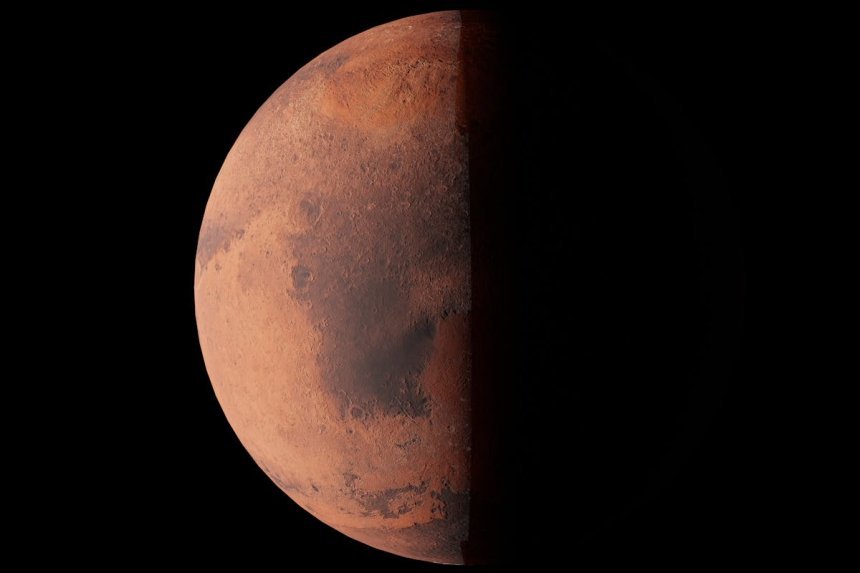Terraforming Mars in 100 Years? Why the Fantasy Might Be a Dangerous Distraction
That’s the real question. You’ve seen the glossy SpaceX animations, read the headlines about Elon Musk wanting a million people on Mars, and maybe even thought, “Heck, I might book a one-way ticket someday.” But here’s the uncomfortable truth: the dream of terraforming Mars in the next century might not just be far-fetched.

We talk about building cities on Mars, but can we even grow a potato there?
That’s the real question. You’ve seen the glossy SpaceX animations, read the headlines about Elon Musk wanting a million people on Mars, and maybe even thought, “Heck, I might book a one-way ticket someday.” But here’s the uncomfortable truth: the dream of terraforming Mars in the next century might not just be far-fetched—it could be misleading, expensive, and even harmful if we’re not careful.
Let’s dig into the red dust.
Mars Ain’t Earth’s Little Brother—It’s a Brutal, Deadly Cousin

Let’s be real—Mars has been sold as Earth 2.0 by everyone from sci-fi writers to billionaire CEOs. But the red planet is more of a cosmic wasteland than a potential paradise.
Not Enough Air. Like, At All.
The atmosphere on Mars is 96% carbon dioxide. Sounds great if you're a plant (but even they wouldn't survive the freezing temperatures). The pressure is less than 1% of Earth's—so if you stepped outside without a suit, your blood would literally boil. Fun, right?
Temperature? Think Antarctica—on Steroids
Average temp on Mars? –63°C (–81°F). The warmest summer day on Mars might hit a cozy 20°C (68°F), but don’t get excited. Night falls, and it drops to –70°C. That's colder than your ex's texts.
No Magnetic Field = Radiation Party
Earth's magnetic field acts as a natural radiation shield. Mars? Not at all. This implies that cosmic rays are continuously bombarded into the surface. For long-term survival, you would have to dwell underground or beneath meters of protective material.
The Wild Tech Being Proposed (And Why Most of It Sounds Bonkers)
You’ve probably heard some version of this: “We’ll nuke the poles and release CO₂ to warm the planet!” Uh-huh. Let’s unpack the main ideas floating around in Mars-terraforming circles—and why they might be more sci-fi than science.
Idea 1: Nuking the Ice Caps
The theory: Drop nukes on Mars’ polar caps to melt CO₂ and kickstart a greenhouse effect.
Reality check: Even if we detonated thousands of nukes, studies (like the one NASA did) show we still wouldn’t produce enough CO₂ to raise the temperature meaningfully. Plus, y’know, nuclear fallout. Lovely.
Idea 2: Giant Space Mirrors
The theory: Build massive mirrors in orbit to reflect sunlight and heat up the surface.
Reality check: Building such structures would require materials and energy resources beyond what even the International Space Station can handle right now. And who’s maintaining them? Some poor dude in a jetpack?
Idea 3: Greenhouse Gases Factories
The theory: Set up thousands of factories on Mars to pump out potent greenhouse gases like perfluorocarbons.
Reality check: These factories would need decades, if not centuries, to make a dent. We can't even control emissions on Earth. How are we gonna manage that 54 million kilometers away?
Even If We “Could”—Should We?
Here’s the twist. Let’s say—just for argument’s sake—that we somehow pull off these stunts. Mars warms up a few degrees. Maybe the atmosphere gets a little denser. Maybe we start seeing lakes form. Sounds awesome, right?
But at what cost?
Climate Justice or Billionaire Vanity Project?
We’re talking trillions of dollars in investment. Meanwhile, climate change is wrecking lives right now here on Earth. Millions face food shortages, floods, fires—and we’re dreaming about warming another planet?
Terraforming Mars could become the ultimate escape plan for the ultra-rich—while the rest of us fight over drinking water.
Environmental Ethics—Yep, Even Mars Has Them
What if microbial life does exist under Mars’ surface? Would terraforming wipe it out? Is it ethical to destroy another planet’s natural state just so humans can plant a flag and build Martian Starbucks?
What’s Actually Possible in the Next 100 Years?
Let’s bring things back to reality. Here’s what we might realistically achieve by 2125:
Semi-Permanent Bases
Think Antarctica-style stations but on Mars. Heavily shielded, self-contained, and home to small teams of astronauts or researchers.
Localized Greenhouses
Growing food on Mars is possible—but not outside in the open. Hydroponics in temperature-controlled biodomes? That’s doable. But not large-scale agriculture. Not yet.
Underground Habitats
Using Martian caves or lava tubes to avoid radiation? Smart. Building underground cities? Maybe in 200 years. But we’ll likely see the first test habitats within this century.
Full Planetary Terraforming
Let’s not sugarcoat it—it ain’t happening in 100 years. Not even close. The energy requirements, tech limitations, and sheer unpredictability of Mars’ climate make it a pipe dream for now.
What Should We Focus On Instead?
You can tell where this is headed without being a scientist. It makes more sense to invest in planetary defense, enhance life on Earth, create space homes in orbit (such as O'Neill cylinders), and conduct research on how to survive in hostile conditions.
The truth is that humanity will not be saved by fleeing to Mars. We shall learn how to avoid destroying our own world.
Share
What's Your Reaction?
 Like
0
Like
0
 Dislike
0
Dislike
0
 Love
0
Love
0
 Funny
0
Funny
0
 Angry
0
Angry
0
 Sad
0
Sad
0
 Wow
0
Wow
0










